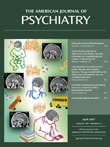Mental health providers, administrators, planners, policy makers, consumers, and family members are frustrated with the inadequacies of crises-oriented hospital treatment that results in a revolving door for too many people with acute mental health disorders. Dramatic cutbacks in funding for inpatient beds have occurred while increasing data support treating patients within a culture of recovery that includes meaningful involvement of the family and other social supports. David S. Heath asserts that “short-term, mobile, intensive treatment in the patient’s home with staff available 24 hours a day is emerging as the most versatile and effective alternative to hospital and is applicable to a broad range of patients with acute mental disorders who would otherwise need admission” (p. xvi). He makes an excellent case in support of this assertion in the book.
The introduction provides a clear description of the core characteristics of mobile crisis home treatment. Terminology such as crises, psychiatric emergency, and mobile used throughout the text is clearly defined in relation to this treatment model. A discussion and table clearly articulate the commonalties and differences between mobile crisis home treatment and assertive community treatment.
Chapter One provides a compelling review of research on mobile crisis home treatment. While the author clearly identifies the common flaws of the 14 studies reviewed, it is noteworthy that all but one was found to reduce bed usage, to be less expensive, equally effective, and preferable to inpatient care. It was interesting that these studies were carried out over five decades in four countries.
Chapter Two describes how mobile crisis home treatment “fits” in with the mental health system as a whole, particularly with inpatient treatment and other alternatives to hospital admission such as crisis residences, partial hospitalization, crisis intervention, outreach services, and psychiatric emergency services. The advantages and disadvantages of each of these service modes are compared with mobile crisis home treatment.
Descriptions of seven mobile crisis home treatment teams are provided in Chapter Three. The provision of community contextual details, acuity and diagnostic information, operational specifics, and research evaluation on each of these programs should enable clinicians and program planners to judge the practicality and possible relevance of these programs for their communities. Chapters four, five, and six provide the “nuts and bolts” of operating mobile crisis home treatment programs. Key elements and principles of the treatment model are presented. Details on the set up and operation of a mobile crisis home treatment service are explicated, and caveats on the timing and sequencing of events necessary for daily program operation are provided. While not as complete as the Allness and Knoedler
(1) Manual for PACT Start-Up, the author does an excellent job of integrating his experiences with the information he gathered from other innovators in this regard.
The last two chapters focus on the use of mobile crisis home treatment with specific mental disorders. The case material is interesting and narrowly focuses on nuances that need to be considered in a mobile crisis home treatment serving people with disorders such as schizophrenia, depression, borderline personality disorder, mania, first-episode psychosis, and postpartum disorders. It might be helpful to programs if recent assessment and intervention guidelines derived from evidence-based research relative to these disorders were referenced; for example, excellent materials are available for educating family members about schizophrenia and other disorders from the Optimal Treatment Project
(2) .

